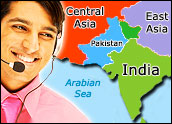
There are a few challenges facing the North American customer care outsourcing industry that may dampen growth in the coming years, according to a new Frost & Sullivan report that projects earned revenues to reach US$20.1 billion in 2012 from $19.5 billion in 2005.
These predictions are intentionally conservative, which means that growth could conceivably be higher, Frost & Sullivan Industry Analyst Michael DeSalles told CRM Buyer.
There are economic drivers propelling the demand for these services, he noted — particularly the ongoing need for competitively priced customer service. That could counteract, to some degree, the challenges to growth for the sector.
“In six years a lot can change in this industry. A lot will, I think.”
Digesting the M&A Bubble
One key restraint — and one that is hardly limited to the customer care industry — has been the consolidation that has occurred over the last few years. Eventually, DeSalles said, efficiencies will be realized from these mergers and acquisitions.
Before that point can be reached, though, companies must go through the messy work of eliminating redundancies and streamlining operations.
The consolidation is less a reflection of maturing demand for services than a way to address the problem of agent retention, DeSalles pointed out. Some M&As have also been geared around acquiring new functionality, such as Spanish-speaking agents to target the U.S. Hispanic market.
“The larger providers are trying to buy a talent base,” he said. “They have recognized the problems in this industry with retention and have decided this is the best way to build out their employee and client base.”
Public Backlash
The ongoing public backlash is another challenge to the customer care outsourcing industry, according to DeSalles. Some companies have pulled customer care operations from foreign-based centers because of customers’ complaints of communication difficulties with service reps.
Privacy and other new regulations that affect contact center operations are another factor. In this case, though, companies have more leeway to deal with the problem. Many client companies are inserting country managers to oversee their outsourced operations, DeSalles noted, and to ensure that corporate guidelines are followed.
Revenue and Risk-Sharing
As a result of these factors — which taken together can apply significant pressure to outsourcers’ operations — some companies are adopting new compensation models to sweeten the pot for customers, DeSalles said, such as revenue and risk-sharing models.
By changing price models to push out efficiencies faster to clients, he commented, a lot of outsourcers are able to bypass or mitigate some of the challenges that face the industry now.





















































